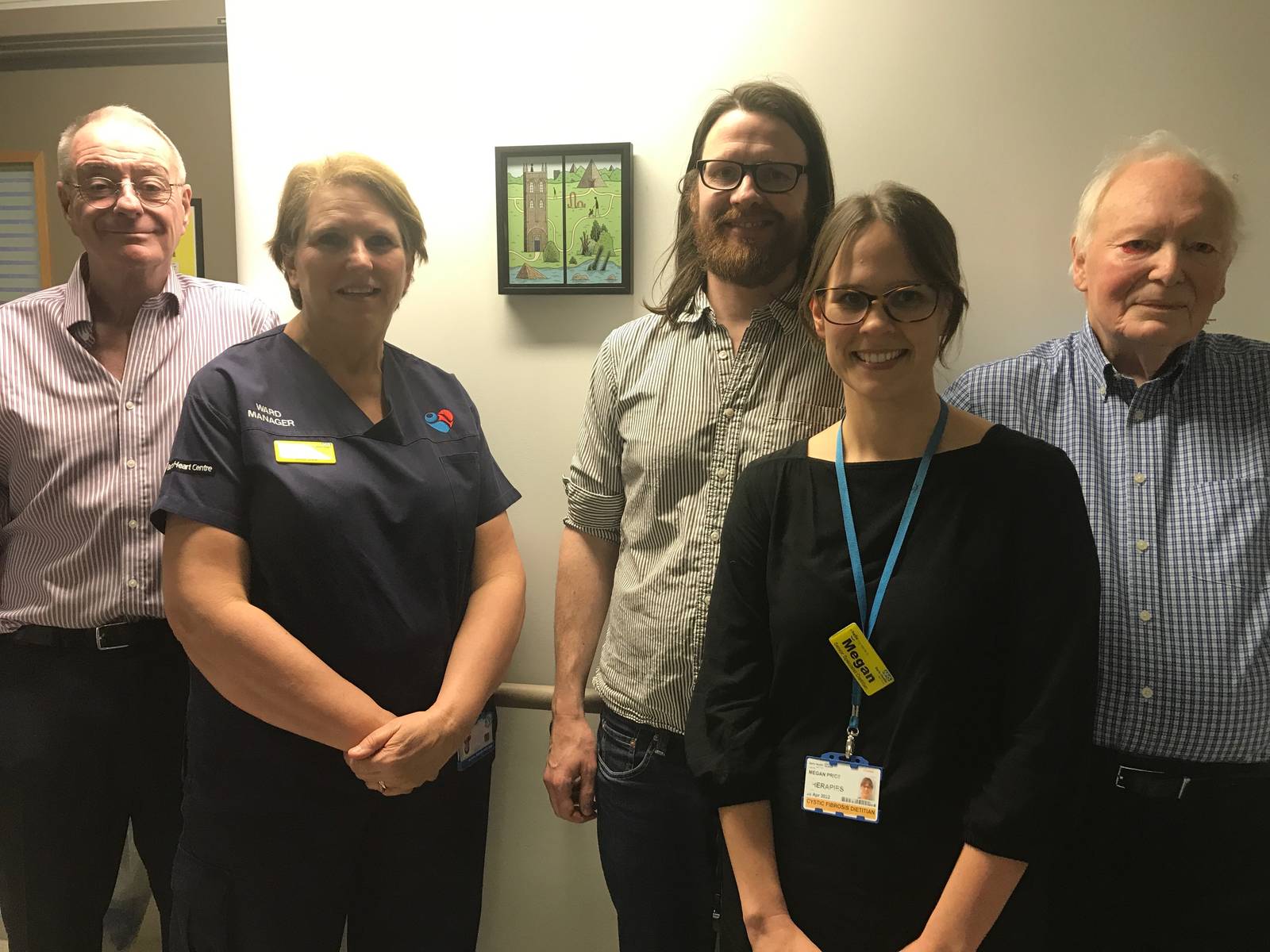Cystic Fibrosis patients whisked a world away from the ward

The Cystic Fibrosis (CF) Unit at St Bartholomew’s Hospital is now home to an exciting art transformation project, which has been specially created to capture the imagination of its patients and transport them away from the hospital environment.
The project, created by renowned cartoonist Tom Gauld, resides within the unit’s isolation rooms, where patients as young as sixteen often spend long periods of time throughout the year whilst receiving specialist treatment. CF patients are unable to socialise with each other as they carry bacteria in their lungs that can be harmful to one another, making the risk of cross-infection too high.
Barts Health NHS Trust’s arts organisation Vital Arts commissioned artist Tom Gauld to create the pieces with funding from the Rahere Association, a charitable fund devoted to the welfare of patients and staff at St Bartholomew’s Hospital.
 Prior to creating the art project, Gauld met with patients on the unit to gain better insight into what life is like for them on the ward and help him better understand what they would want to get from the artwork.
Prior to creating the art project, Gauld met with patients on the unit to gain better insight into what life is like for them on the ward and help him better understand what they would want to get from the artwork.
The outcome is a series of images of an urban park, featuring humorous vignettes and unexpected elements, that unwinds across the unit. The imaginary landscape takes the form of Myriorama-type cards, which were popular in the 19th century and can be rearranged to create a series of different pictures. Patients can imagine the variations in their own - as well as adjacent - rooms and will always have new elements to discover and explore when they next return to the unit and occupy a different room.
The art installation is designed to stimulate patients’ imagination and inspire them to create their own world within the pictures, transporting them away from their clinical and often lonely surroundings.
The project responds to research that shows the experience of both adult and child patients can be greatly enhanced by improving their environment. The evidence suggests that by reducing anxiety in patients, their appetite increases, they are more responsive to treatment and even their pain can ease.
Edward Rowland, Medical Director at St Bartholomew's Hospital, said: "I want to say a huge thank you to everybody who has been part of this project - The Rahere Assocation, Vital Arts, Tom Gauld as well as our own staff and patients. We've recently started a programme at St Bartholomew's to offer better psychological support to patients and this project is a fantastic example of how we're learning to engage on a more emotional level with our patients and discover new ways of supporting them through their journeys."
Artist Tom Gauld, who designed the art project, said: "I'm really pleased to hear that the patients here at St Bartholomew's are enjoying the art. A huge thank you to all the ward staff for allowing me to come in and spend time with patients on the ward - this really helped me better understand their circumstances and what direction to take this project in. It has been a very different experience for me - making art that will keep people interested and engaged in it for an extended amount of time. It's lovely to see it finished and up across the ward."
Catsou Roberts, Director at Vital Arts, said: "This commission is a good example of how Vital Arts seeks to raise the standard of art in hospitals with innovative and ambitious projects. We hope to provide patients with meaningful cultural encounters that might improve their experience in hospital. The fruition of this artwork was a long and winding journey, and I am grateful to the Rahere Association, to the patients and clinical staff--and especially to Tom for bringing his quirky vision and deadpan humour to the CF Unit."
Rahere Association Chairman, Peter Droop, said: "The Rahere Association (a Barts charity) is delighted to have been able to fund the project by Tom Gauld in the CF unit. The patients have to be in hospital several times a year, often in isolation, and while medical care is the primary concern art within the rooms can provide stimulation and amusement to patients assisting their wellbeing."
